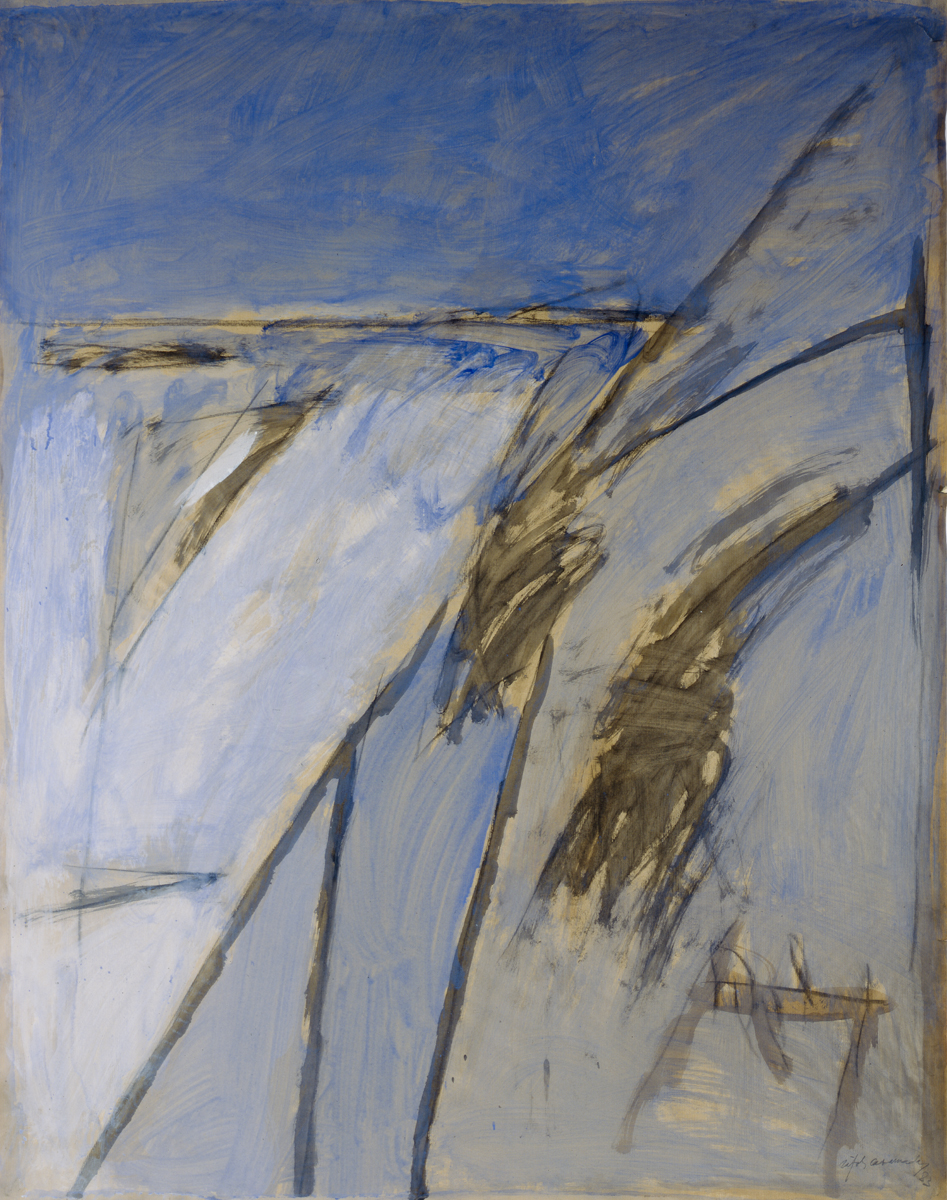Ràfols Casamada, a painter, draughtsman and art teacher, decided to abandon his architectural studies to devote himself to painting. In the 1950s, with the aid of a scholarship, he went to Paris, where he made a close study of the great avant-garde artists of the second half of the twentieth century. Starting from a post-Cubist figurative style, he moved towards
informalismo and Neo-Dada, and then in the eighties he adopted a form of abstraction derived from American

This contemporary painting movement emerged within the field of abstraction in the 1940s in the United States, from where it spread worldwide. Rooted in similar premises and postulates as Surrealism, the Abstract Expressionist artists regarded the act of painting as a spontaneous and unconscious activity, a dynamic bodily action divested of any kind of prior planning. The works belonging to this movement are defined by the use of pure, vibrant primary colours that convey a profound sense of freedom. The movement’s main pioneers were, among others, Arshile Gorky (1904-1948) and Hans Hoffman (1880-1966). Leading Spanish exponents of the movement are Esteban Vicente (1903-2001) and José Guerrero (1914-1991), who lived for some time in New York City, where they were in first-hand contact with the many artistic innovations taking place there around that time.
, especially that of Mark Rothko (1903—1970). It is very difficult to sum up his work, since it reflects an idea of art as an expressive need, and this makes him one of the pioneering painters and leading figures of

A tendency that emerged within abstract painting in 1945 in France, as a reaction against the excessive coldness of

A term introduced in the 1920s to name a kind of abstract art based on scientific and mathematical principles. The main goal was to eliminate all subjectivity in favour of art based on the essence of geometric forms. Its main champions were Wassily Kandinsky (1866-1944), Kazimir Malevich (1879-1935) and Piet Mondrian (1872-1944).
and attempting to give more room to the expression of the artist’s emotions. The movement favoured colour over form through techniques like watercolour and oil paint, which would be the most widely used by its practitioners. Major sources of inspiration were the painting of Vassily Kandinsky (1866-1944) and automatism in Surrealist painting. Key names within the movement are Pierre Soulages (1919), Georges Mathieu (1921-2012) and Hans Hartung (1904-1989).
in Spain.
Rendered in acrylic and charcoal on paper, this work, pregnant with mystery and emotion, is a rectangle of light created by superimposing layers of bluish paint which dissolve the forms and refer us back to the

an art and architecture movement born in 1914 in Russia which became known particularly after the October Revolution. The movement defends an active engagement of the artwork with its surrounding space. The term was first used by Kazimir Malevich (1878-1935) in 1917 to contemptuously describe a work by Aleksander Rodchenko (1891-1956) and it did not have a positive connotation until the
Realist Manifesto from 1920.
of his early work. It is a dematerialised painting with an underlying geometric scheme which composes the visual elements that make up all his work: colour, line and form.









